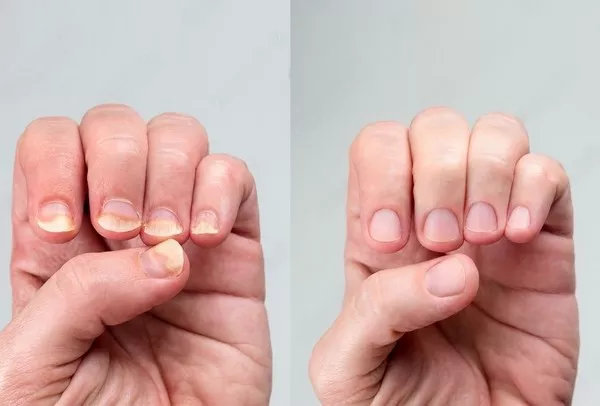Hidradenitis Suppurativa (HS) is a chronic skin condition characterized by painful, inflamed lesions in areas of the body where skin rubs together, such as the armpits, groin, and buttocks. These lesions can cause significant discomfort and have a profound impact on an individual’s quality of life. While there is no cure for HS, various treatment options aim to manage symptoms and reduce flare-ups. One such option that has garnered attention in recent years is laser hair removal.
Laser hair removal involves the use of concentrated beams of light to target and destroy hair follicles, preventing hair growth in the treated area. While traditionally used for cosmetic purposes, laser hair removal has shown promise as a therapeutic intervention for individuals with HS. Understanding the relationship between hair follicles and HS lesions sheds light on why this treatment modality may be effective.
The Role of Hair Follicles in Hidradenitis Suppurativa
HS is believed to develop as a result of hair follicle blockage and inflammation. In individuals predisposed to the condition, factors such as hormonal fluctuations, genetics, and immune dysfunction can trigger the formation of plugged hair follicles. These blocked follicles become a breeding ground for bacteria, leading to the formation of painful abscesses, nodules, and tunnels under the skin.
Hair follicles play a crucial role in the pathogenesis of HS. The presence of terminal hairs, which are thick and coarse, contributes to the mechanical friction and irritation experienced in areas prone to HS lesions. Additionally, hair follicles serve as a conduit for the spread of inflammation and infection within the skin.
Given the central role of hair follicles in HS, interventions aimed at reducing hair growth have emerged as potential strategies for managing the condition. Laser hair removal presents a targeted approach to address this aspect of HS pathology.
How Laser Hair Removal Works in Hidradenitis Suppurativa
Laser hair removal targets the melanin pigment present in hair follicles. The energy from the laser is absorbed by the melanin, leading to heat generation and subsequent destruction of the follicle. Over multiple sessions, laser treatment can effectively reduce hair growth in the treated area.
In the context of HS, laser hair removal offers several potential benefits:
1. Reduction of Hair-Related Irritation: By selectively targeting and destroying hair follicles, laser hair removal can decrease the mechanical friction and irritation that contribute to HS flare-ups. Without the presence of terminal hairs, the likelihood of follicular occlusion and subsequent inflammation is reduced.
2. Prevention of Recurrent Abscess Formation: HS lesions often arise from infected hair follicles. By inhibiting hair growth in affected areas, laser hair removal may help prevent the recurrence of abscesses and nodules, thereby minimizing disease activity.
3. Modulation of Inflammatory Response: Laser therapy has been shown to exert anti-inflammatory effects on the skin. By reducing inflammation in the vicinity of hair follicles, laser hair removal may contribute to overall symptom improvement in individuals with HS.
4. Improvement in Quality of Life: The chronic nature of HS can have a profound impact on physical and emotional well-being. Laser hair removal offers the potential to alleviate symptoms, enhance self-esteem, and improve quality of life for individuals living with HS.
Clinical Evidence Supporting Laser Hair Removal for Hidradenitis Suppurativa
While research specifically evaluating the efficacy of laser hair removal in HS is limited, anecdotal evidence and small-scale studies suggest promising outcomes. A study published in the Journal of the American Academy of Dermatology reported significant improvement in HS severity scores and lesion counts following laser hair removal treatment. Patients experienced reduced pain, inflammation, and recurrence of lesions in treated areas.
Furthermore, a systematic review of various interventions for HS, including laser therapy, concluded that while larger, well-designed studies are needed, laser hair removal shows potential as a safe and effective adjunctive treatment for HS.
Considerations and Precautions
While laser hair removal holds promise for individuals with HS, several considerations should be taken into account:
1. Individual Variation: Responses to laser therapy may vary among individuals with HS. Factors such as skin type, hair color, and disease severity can influence treatment outcomes.
2. Multimodal Approach: Laser hair removal is most effective when used in conjunction with other HS management strategies, such as topical and systemic medications, wound care, and lifestyle modifications.
3. Expertise and Safety: Laser hair removal should be performed by trained and experienced healthcare professionals to minimize the risk of complications, such as skin burns and pigment changes.
4. Patient Education: Individuals considering laser hair removal for HS should be educated about the potential benefits, risks, and expected outcomes of the procedure.
Conclusion
Laser hair removal represents a promising therapeutic option for individuals with Hidradenitis Suppurativa. By targeting hair follicles, laser therapy addresses a key aspect of HS pathology and may help reduce symptoms, prevent recurrence of lesions, and improve quality of life. While further research is needed to fully elucidate its efficacy and safety profile, laser hair removal holds potential as a valuable adjunctive treatment in the comprehensive management of HS. As our understanding of this complex condition continues to evolve, innovative approaches such as laser therapy offer hope for better outcomes and improved well-being for individuals living with HS.
























